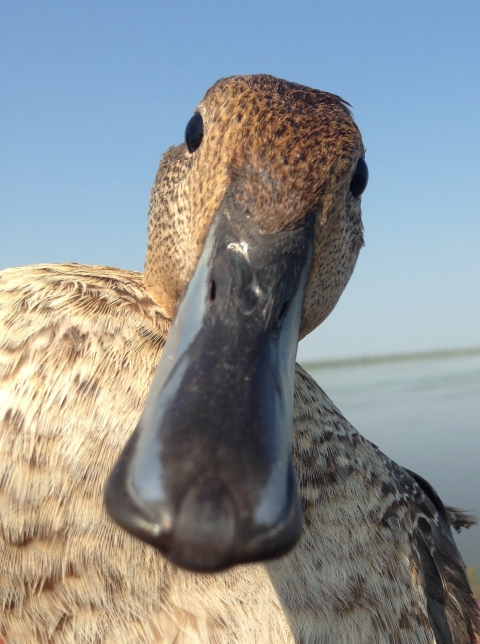About this Collection
Waterfowl Banding Program Catches a Break
by Mark Koneff and Phil Thorpe
After two years of waterfowl banding operations being restricted in Canada due to the pandemic and then the additional planning and mitigations in response to the avian influenza outbreak in 2022, the 2023 waterfowl banding season in Canada was pretty smooth. Certainly, avian influenza was a concern, but we were able to employ the same mitigations as last year and follow the same coordination procedures with our Canadian partners, as well as wildlife and agricultural health officials in both nations, so the build-up to the season was much less difficult. All special COVID border crossing measures for getting crews into Canada were largely rescinded and the process for coordinating entry with the Canadian Government and our Embassy in Ottawa had returned to normal as well.
All crews cleared Canadian Customs and Border Protection entry points with only minor delays, and there were no complicated maintenance issues with our government vehicles, boats, or trailers. No boats or government vehicles were stolen or broken into either (we’ll save that for another story) and we were thankful that the crews remained healthy! Nor were there any complicated logistics this year with respect to supplying the banding stations. The weather cooperated too; it was cooler than recent years which is a blessing to the field crews but also increases the ducks’ interest in bait and increases trapping success. In general, the weather was relatively benign throughout the season, which helped keep roads passable and reduced the need to leave traps open or repair traps damaged in storms.
We were not surprised to find wetlands across the prairies of Canada to be dry - the only bright spots were the grasslands and parklands of eastern Saskatchewan. That dryness, as we observed during the waterfowl aerial surveys in May and June, extended into the boreal forest of British Columbia, Alberta, and Saskatchewan and banding crews reported water levels in the bush as very low. Still, waterfowl, including focal species like mallards and northern pintail, were abundant and concentrated at many of our stations, except that trapping them was challenging in Alberta and Montana. Wetland conditions at our U.S. prairie stations in northeast Montana and northern North Dakota were better than most areas north of the border, but crews competed with pea harvest, which for mallards is the difference between a small dinner salad of barley at the trap site or a huge ice cream sundae out in the pea field. Ducks go for the sundae and return to the wetlands to just loaf, which tormented the banders. At our sole Atlantic Flyway station in northern Maine, conditions were notably dry, but we also enjoyed good success. There were no disease outbreaks at our banding operations and we again contributed that to the national avian influenza surveillance programs in both nations.
Overall, waterfowl breeding and molting chronology seemed to be about 2-3 weeks behind normal. We saw that wing molt for all species was behind what we normally see during August banding. Particularly noticeable were blue-winged teal that still were undergoing their wing molt or still in pre-molt (not started molting their wing feathers). Typically, they are all done by mid-August since they are an early migrant. We also encountered blue-winged teal ducklings that were not fledged, an even rarer encounter in mid-to late August. Other waterfowl species followed this trend, and crews observed mallard and northern pintail drakes in early stages of molting that, for these species, normally occurs in June and July. Interestingly, late-summer phenology appeared otherwise to be normal or perhaps a little early with trees beginning to drop leaves in Saskatoon. We’re a bit sorry to see summer is coming to an end, but we’re looking forward to autumn and a good hunting season.
Disclaimer: All banding, marking, and sampling is being conducted under a federally authorized Bird Banding Permit issued by the U.S. Geological Survey’s Bird Banding Lab and the Bird Banding Office in Canada.

